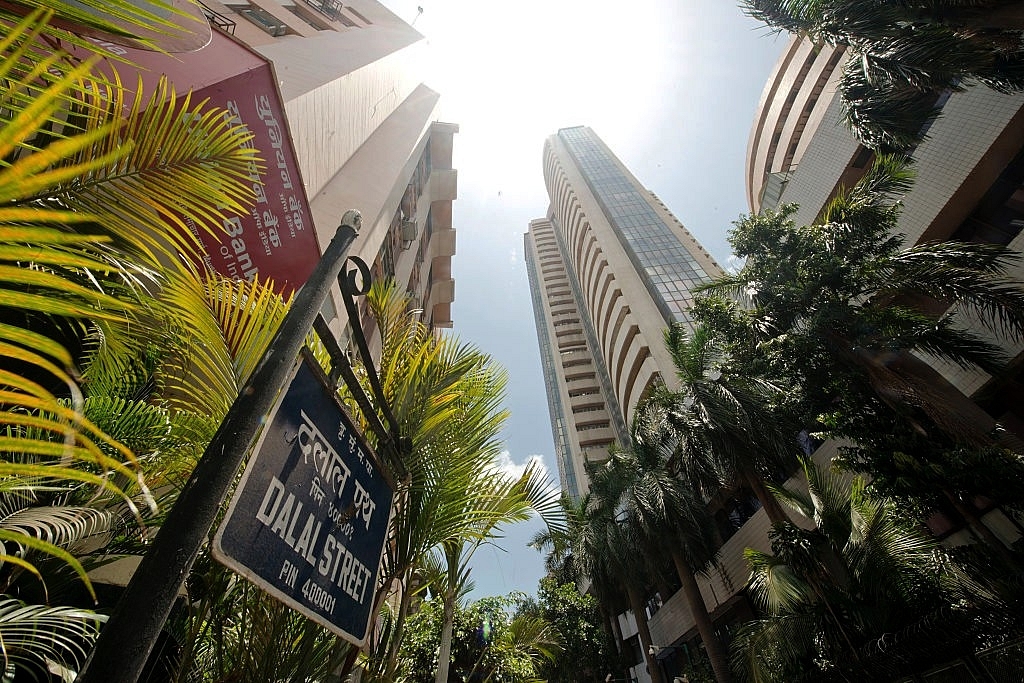Business
A Snapshot Of The Bear Run In Indian Stock Markets
- Amidst the lacklustre sentiment prevailing on Dalal Street, investors need to be patient and focus on the long-term opportunities that the stock market offers.

Bombay Stock Exchange. (Aniruddha Chowdhury/Mint via GettyImages)
It’s been difficult times for stock market investors with recent sharp drops witnessed in several key indexes from their peaks earlier this year at a time when the macro-environment for the local economy has turned rather difficult with Brent oil prices touching $82 per barrel, weakening rupee and the widening current account deficit. And the popular S&P BSE 250 Small Cap Index has dropped nearly 30 per cent from its peak on 12 January, 2018 till the close of trading on Monday (1 October), while the S&P BSE 150 Mid Cap Index has weakened almost 18.5 per cent from its peak in mid-January 2018. A recent online media report also highlighted that 152 stocks out of the broader S&P BSE 500 hit their 52-week lows during intra-day Monday trading. Meanwhile, the benchmark S&P BSE Sensex has fallen almost 6.5 per cent from its peak reached on 29 August 2018.
The above development comes at a time when key market participants, foreign institutional investors (FIIs) had net sales (gross purchases minus gross sales) of nearly Rs 9,468.7 crore for September 2018, according to data sourced from leading online information providers related to the stock market. In addition, during the period April – August of this year, FII net sales amounted to nearly Rs 37, 224 crore.
A stock market analyst at a leading domestic brokerage house pointed out that apart from several global macro-economic challenges, foreign investor confidence has also been negatively impacted by the recent IL&FS default and its broader impact on the financial sector, coupled with the earlier banking scandal related to Nirav Modi.
Also, the benchmark S&P BSE Sensex trades at a valuation metric, P/E, of nearly 23.9 times, which is significantly higher than peer indexes in emerging markets like China and Brazil. The price to earnings ratio refers to the ratio of the market price of a company’s stock to its earnings per share (EPS). Analysts highlight that a higher P/E ratio indicates higher growth prospects but also a higher level of risk for investors. And that’s because if the stock market corrects/goes down, investors can lose a lot with stocks/indexes that trade at a higher P/E. Foreign investors when investing in India are taking a greater risk vis-a-vis other emerging markets as the P/E ratio in India is higher than Brazil and China. And with macro – economic challenges in India, foreign investors may not want to take additional undue risks investing here and selling here.
The current problems with the once popular NBFC sector have resulted in marked correction in stocks from this sector. For instance, Indiabulls Housing Finance ended Monday’s trade at Rs 905.7, a slump of nearly 37 per cent from its 52-week high reached in late January this year. Similarly, Dewan Housing Finance Corporation ended Monday’s trade at Rs 317.9, a fall of nearly 54 per cent from its 52-week reached in early September this year. Stocks in other sectors like oil marketing companies, realty and telecom, amongst others, have also witnessed strong selling pressure.
The sell-off by foreign investors is also visible in other key emerging stock market indices across the globe. For instance, the Shanghai Stock Exchange Composite Index has fallen nearly 7.9 per cent from its highest level this year reached on January 24. Similarly, the Brazil-based Ibovespa has fallen almost 9 per cent from its peak reached in late February this year.
Amidst the lacklustre sentiment prevailing on Dalal Street, investors, especially local mutual funds and insurance companies, are increasingly turning optimistic on stocks related to export sectors, like information technology and pharmaceuticals. Also, there is a growing optimism that the capital expenditure cycle amongst companies in the private sector is expected to pick up after several years and this in turn could create new opportunities for stock investors. As a result, stocks like TCS, Infosys, Sun Pharma and Larsen and Toubro are trading close to their 52-week highs. And it was no surprise that domestic institutional investors bought net nearly Rs 57, 034 crore worth of shares on the local bourses during April – September of this year.
Stock market strategists also highlight that with the government and allied institutions aggressively attempting to reduce non-performing loans in the banking sector via the Insolvency and Banking Code (IBC) it would help to improve the health of the broader financial sector over the next few quarters. Recent media reports also indicate that banks, public and private sector, have recovered nearly Rs 1.1 lakh crore over the past one year from loan defaulters.
The above, in turn could create investment opportunities for investors with public sector banks like SBI, Canara Bank and private sector lenders like ICICI Bank and Axis Bank, which have a large legacy NPA problem related to industrial loans.
Clearly, investors need to be patient and focus on the long-term investment opportunities that Dalal Street offers.
Introducing ElectionsHQ + 50 Ground Reports Project
The 2024 elections might seem easy to guess, but there are some important questions that shouldn't be missed.
Do freebies still sway voters? Do people prioritise infrastructure when voting? How will Punjab vote?
The answers to these questions provide great insights into where we, as a country, are headed in the years to come.
Swarajya is starting a project with an aim to do 50 solid ground stories and a smart commentary service on WhatsApp, a one-of-a-kind. We'd love your support during this election season.
Click below to contribute.
Latest